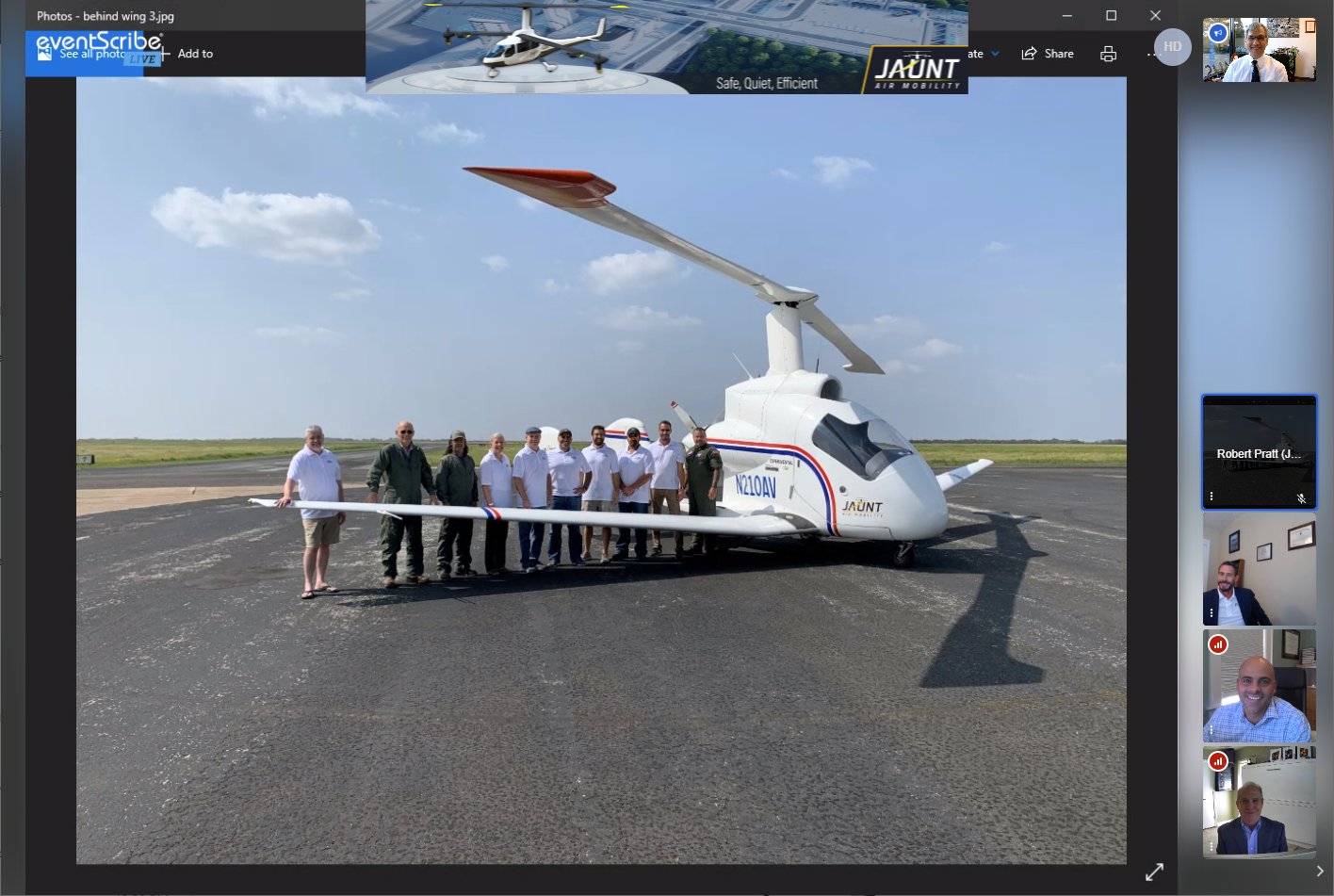EF Global VTOL
29 May 2023

Jaunt Air Mobility is an oddball in the sea of 350-plus electric vertical takeoff and landing (eVTOL) aircraft concepts catalogued on the VFS World eVTOL Aircraft Directory (www.eVTOL.news/aircraft). It is one of the only electric gyrodyne aircraft being developed for the urban air mobility (UAM) market, and many of those who understand autorotative rotorcraft are impressed. Jaunt is also one of the quietest UAM projects that packs a lot of technology, brain share and intellectual properties (IP).
With 20 years of CarterCopter testing and an impressive array of IP, Jaunt doesn’t feel the need for big boasts. It has the time, expertise and know-how to develop its electric “Journey” aircraft, and has lined up its aviation partners, all with proven track records.

At their Forum 76 virtual exhibit, Jaunt showed off the progress with their Jaunt Technology Demonstrator (previously the CarterCopter PAV), now back on flight status. Pilot Chris O'Brian flew the aircraft on Sept. 18 near Dallas, Texas. Original inventor Jay Carter was onboard as an observer.
We caught up with Martin Peryea who recently took over the helm as interim CEO for Jaunt. Peryea, who has been working with Carter’s slowed rotor/compound (SR/C) technology for half a decade, was one of the co-founders of Jaunt with Kaydon Stanzione, who stepped away to pursue other ventures.
Q: Martin, can you tell us how the change of leadership at Jaunt will change the strategy?
A: Our strategy for the company and the development of the Jaunt Journey remains the same. We are currently working on our Series A funding to advance critical milestones set out in our business plan.
Q: The press release said you are the “interim CEO.” Are you expecting to find another CEO? If so, what would be your future role in the company?
A: Yes, we will be seeking a new CEO [chief executive officer] to guide the company's business and funding goals. I am still the CTO [chief technology officer]. Once a CEO is on board, my efforts will be on design, certification, and manufacturing the aircraft.
Q: How’s the development going?
A: As with many aviation players, COVID-19 has slowed our development timeline somewhat. We had to adjust our plan based on the delays and lost productivity across the entire industrial sector. We are now planning for low-rate production and certification in late 2026, about a year delay from our original schedule.
Q: How do you see the UAM landscape?
A: I believe the UAM market has grown significantly despite COVID-19 and the market is more vital than ever, both in advancing technology and growing global economic interest and support.
Q: Are there any new technologies that caught your eyes? Or competition worth watching?
A: Battery technologies continue to advance, and it is imperative that current designs lend themselves so they can be upgraded to these new chemistries. I am also happy to see that there is a greater interest in using thermoplastics across the various eVTOL platforms, and the activity with material suppliers developing material properties and various weaves.
Q: Have you settled yet on battery chemistry?
A: Not yet. We are close. Every chemistry has its advantages and disadvantages, and selecting the right battery chemistry and configuration is actually a very complicated [multidisciplinary design optimization] MDO design problem. The list of requirements is very long and some of these requirements conflict with each other; finding the right configuration requires a high-fidelity model of the entire system (aircraft, motors, controllers, switching units, battery modules and battery cells).
We look forward to hearing more from Jaunt Air Mobility in the months ahead!